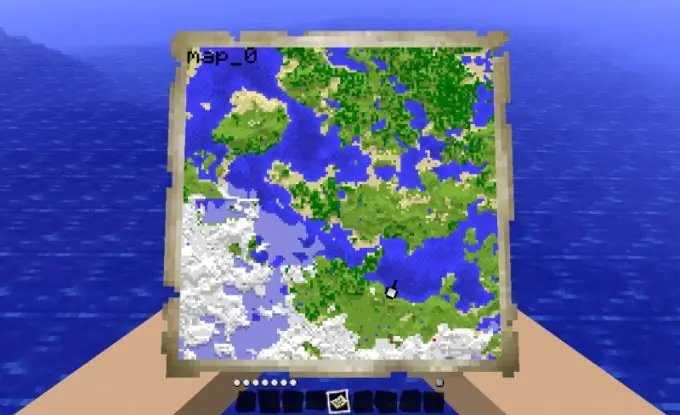The map in the game Minecraft helps you navigate the world around you, calmly return home and generally feel much more confident during long-distance expeditions.

How to make a map?
You can make it out of a compass and paper. The compass is created from one unit of red dust (located at a depth from the first to the sixteenth level) and four iron ingots (you can mine iron ore in the nearest cave and melt it in a furnace). On the workbench, you need to place dust in the central cell and surround it with iron ingots, forming a cross. Paper can be made from cane. Reed grows only on the banks of water bodies. Three cane units placed horizontally on a workbench produce three paper units. To make a map, you need to place the compass in the center slot on the workbench and surround it with eight pieces of paper.
To see the map while holding it in your hands, you need to look down. Thus, it does not obscure the surrounding space, allowing you to travel relatively comfortably.
Features of cartographic expeditions
First, the card is updated only when the player is holding it. The rest of the time it will not be updated. It is not always convenient to navigate unknown and possibly dangerous terrain with busy hands. To protect yourself, the weapon must be placed in the cells closest to the map of the quick access panel.
Second, the map only depicts the surface, until it is possible to create a map of caves, Nether, or End. The creator of the game stated that the cave map is an interesting idea, but they have not yet appeared in the game.
Third, the center of the map is fixed. This means that the card will not "move" with the player. When he leaves the map, it will stop updating.
Any card can be duplicated. To do this, on the workbench, you need to put an empty card next to the filled one. This is very handy in a multiplayer game.
The very first map can describe an area with dimensions of 128x128 blocks. It can be expanded on a workbench by placing the card in the center slot on the workbench and surrounding it with eight sheets of blank paper. The enlarged map will have the same center as its base, but describe the area already in 256x256 blocks. Thus, the scale will be halved. Maps can be enlarged several times. The maximum area that the largest map can describe is 2048x2048 blocks. But if the player went beyond the area displayed on one map, in order to continue exploring the world, he will have to create a second one. Cards can be named, this greatly helps to choose the one you need, if there are several of them in your inventory.
To start exploring the area, you need to take a blank map in your hands and press the right mouse button. Changes in the landscape of an already explored area will be mapped only after a second visit to this place.






